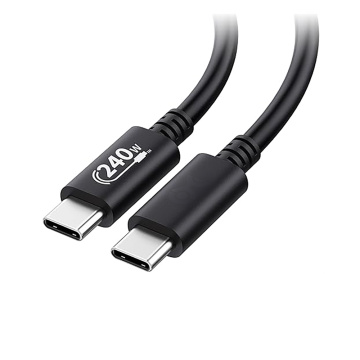Difference between USB3.1 and USB3.2
USB3.1 and USB3.2 are important interface standards for connecting computers and external devices. They are basically similar in appearance, but there is a clear difference in parameters: USB3.1 has a theoretical bandwidth of 10Gbps, while USB3.2 has a theoretical bandwidth of up to 20Gbps, and the transmission speed of USB3.2 is twice that of USB3.1. With the addition of USB4, the USB standard has changed, but USB3.1 and USB3.2 still play an important role in different scenarios. In terms of interfaces, USB3.2 mainly uses the Type-C connector, while USB3.1 can still see the A and B ports.
(1) Sharp speed contrast
The theoretical transmission speed of USB3.2 is 20Gbps, which is twice that of USB3.1, and this huge speed difference is also reflected in actual use. USB3.1, as an earlier interface standard, can theoretically reach a maximum transmission speed of 10Gbps; however, in actual use, due to the influence of transmission lines, interface bandwidth and external interference, the actual transmission speed of USB3.1 is often reduced. However, in practice, due to a variety of factors such as the influence of the transmission cable, interface bandwidth and external interference, the actual transmission speed of USB3.1 is often reduced. Under normal circumstances, the actual transmission speed of USB3.1 can reach about 7.2Gbps. For example, some data show that in actual tests, the actual transmission speed of USB3.2 can reach about 15Gbps, which is significantly higher than that of USB3.1.
(2) Application Scenario Differences
USB3.2 has an obvious advantage when handling a large number of files or large data volume files. For example, when dealing with high-definition videos, large games and other large data files, the high-speed transmission of USB3.2 can greatly shorten the transmission time and improve work efficiency. Taking a 4K HD movie as an example, it may take only a few minutes to transfer it using the USB3.2 interface, while it may take more than ten minutes using the USB3.1 interface. For daily small file transfers or simple data exchanges, USB3.1 speeds are more than enough. For example, when transferring some documents, pictures and other small files, the speed of USB3.1 can meet the user's needs, and also has certain advantages in terms of cost and compatibility. However, when dealing with a large amount of data, the speed of USB3.1 may be slightly stretched. For example, when a large number of photos, videos and other files need to be backed up, the high-speed transmission advantage of USB3.2 is more obvious, and can greatly reduce the backup time.

